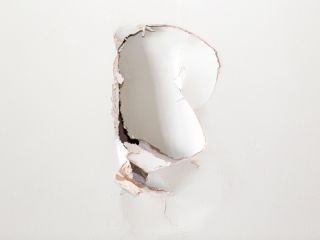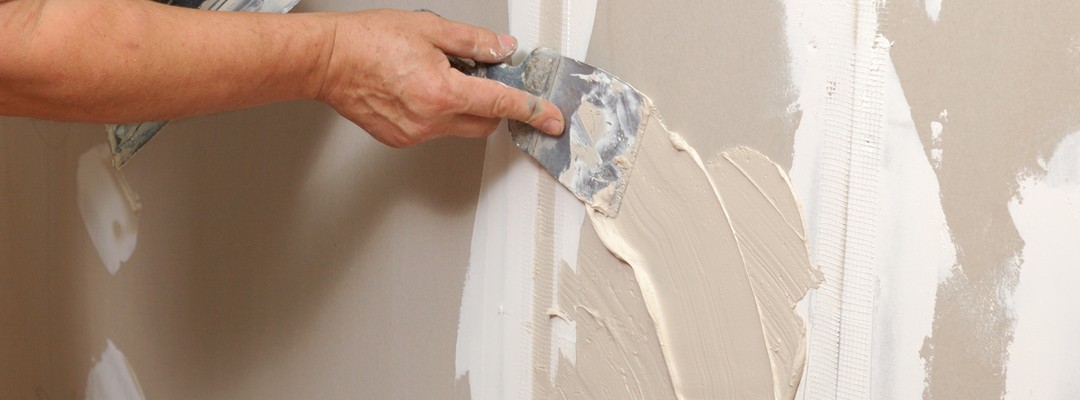Essential Tips for Effective Drywall Repair Service and Setup Strategies
Effective drywall repair work and installment calls for a careful strategy. Understanding the sorts of drywall and having the right devices is crucial. Exact dimensions and appropriate techniques can considerably impact the result. Numerous forget essential actions like taping and sanding, which can make or damage the final appearance. As jobs advance, typical difficulties may occur that require interest. Discovering these pointers can result in a more refined and successful finish.
Recognizing Various Kinds Of Drywall
Comprehending the numerous kinds of drywall is crucial for any successful fixing or setup task. Drywall, frequently known as plaster board, comes in a number of varieties tailored for details applications. Criterion drywall is the most extensively made use of kind, perfect for general indoor wall surfaces and ceilings. Moisture-resistant drywall, frequently green in color, is made for locations prone to moisture, such as washrooms and kitchens. Fireproof drywall, generally colored pink or purple, is engineered to hold up against higher temperatures and is commonly used in garages or near furnaces. Furthermore, soundproof drywall helps lower noise transmission, making it suitable for multi-family homes or taping workshops. Specialized drywall, like concrete board, is made use of in wet locations like showers or bathtub surrounds. Recognizing these kinds assists in choosing the appropriate product for each job, making sure toughness and performance in repairs or new setups.
Vital Tools for Drywall Repair and Installation
Having the right tools is necessary for efficient drywall fixing and installment. A quality energy blade is important for cutting drywall sheets precisely. A drywall T-square aids guarantee straight sides, while a taping blade is needed for using joint compound efficiently over joints. In addition, a drywall saw permits for eliminating harmed areas or fitting drywall around components.
For hanging drywall, a power drill with drywall screws is essential, as it allows fast and safe setup. A level is additionally important to verify that the drywall is straight and properly aligned. Once it has dried, a sanding block or pole sander is essential for smoothing out joint substance. Lastly, a measuring tape is essential for precise measurements, stopping waste and making sure a correct fit. Geared up with these tools, individuals can take on drywall jobs properly, leading to professional-looking outcomes.
Step-by-Step Overview to Repairing Holes and Cracks
When resolving openings and fractures in drywall, having the right tools and materials is crucial for an effective fixing. This guide describes the necessary things and gives a clear, step-by-step process to successfully bring back the surface area. Recognizing these elements will certainly aid guarantee a seamless surface and durable results.
Tools and Materials Needed
A well-equipped toolkit is important for effective drywall repair work and installment. Trick devices consist of an utility blade for reducing drywall, a measuring tape to assure exact sizing, and a drywall saw for bigger openings. A putty knife is necessary for applying joint substance smoothly, while a fining sand block or post sander helps attain a smooth coating. For patching, a roll of fiberglass harmonize tape or paper tape is essential to enhance joints. Additionally, a drill and screws are required for protecting brand-new drywall pieces. Vital materials include joint substance, guide, and paint to finish the repair. Having these devices and materials available assures a smoother, much more effective fixing procedure, generating professional-looking results.
Fixing Process Actions
Repairing holes and cracks in drywall needs an organized technique to assure a seamless finish. First, the location surrounding the damage ought to be cleansed thoroughly to remove dust and particles. Next, for tiny fractures, a putty blade is used to apply a joint compound equally over the location. For bigger holes, a spot is essential; the harmed section is eliminated, and a new piece of drywall is fitted in place, safeguarded with screws. Once the spot is in placement, joint substance is put on blend the edges. After drying out, sanding the area smooth is essential. The repaired surface area should be keyed and repainted to match the surrounding wall surface, making certain an inconspicuous repair.
Strategies for Putting Up Drywall Panels
Setting up drywall panels requires careful planning and exact execution to assure a professional and smooth coating. Initially, it is crucial to determine the wall surface room properly and reduce the panels to fit, guaranteeing that they line up with the studs. Positioning the panels flat is commonly suggested, as this can enhance the architectural stability and reduce the number of joints.
Utilizing drywall screws, installers need to secure the panels every 16 inches along the studs, making sure a firm hold. It is essential to stay clear of overdriving the screws, which can harm the paper surface. For corners and sides, utilizing an utility knife enables clean cuts and a snug fit.

Ending Up Touches: Insulation, Mudding, and Fining sand
Once the drywall panels are safely in position, the next essential step entails the finishing touches of taping, mudding, and sanding. Insulation is essential for developing a seamless shift between panels and concealing joints. A quality drywall tape, either paper or fiberglass harmonize, need to be applied over the joints, ensuring it sticks correctly to the mud that will be applied following.
Mudding, or using joint compound, complies with the taping procedure. This substance loads spaces and ravel the surface. An initial coat needs to be used generously, feathering the edges to blend with the drywall. After the initial coat dries out, subsequent layers may be required for a perfect coating.
Ultimately, sanding is necessary to achieve a smooth surface area. A fine-grit sandpaper should be utilized to delicately smooth out any type of imperfections. Treatment must be taken to avoid over-sanding, which can harm the drywall - Drywall Repair Ogden UT. Correctly carried out, these finishing touches develop an expert appearance prepared for paint
Tips for Keeping Your Drywall After Installation
Maintaining drywall after installation is important to preserving its appearance and structural stability. Routine cleansing is necessary; dust and dust can collect, so gentle wiping with a wet fabric is suggested. Property owners ought to also inspect for any indicators of wetness or mold, particularly in high-humidity areas like kitchens and restrooms. If any kind of damages occurs, it is very important to address it without delay to protect against more concerns.
Using furniture pads can help avoid scrapes or dents from hefty products. Additionally, painting the drywall with a premium, washable paint gives an extra layer of security and makes future cleaning easier. Stay clear of you could check here utilizing rough cleansers or devices, as these can damage the surface. Preserving a stable indoor environment with proper humidity degrees will help prevent cracking or deforming over time. By adhering to these tips, one can ensure that drywall stays in superb problem for years to find.
Frequently Asked Concerns
How Lengthy Does Drywall Take to Completely Dry After Installment?

Can I Install Drywall Over Existing Drywall?
Yes, drywall can be mounted over existing drywall, however it is important to assure the underlying surface is protected and adequately prepared. This method can improve insulation and lower setup visit this site time, though it may include weight.
What Is the most effective Means to Soundproof Drywall?
The most effective way to soundproof drywall involves using specialized soundproofing products, such as durable networks, acoustic caulk, and sound-dampening drywall. These strategies effectively minimize sound transmission between rooms, enhancing general acoustic efficiency in living areas.
Exactly how Do I Select the Right Drywall Density?
To choose the right drywall thickness, take into consideration the application and location. Requirement household walls commonly use 1/2 inch, while ceilings or specialized areas may call for 5/8 inch for added strength and soundproofing capabilities.
Exist Eco-Friendly Drywall Options Available?
Yes, environmentally friendly drywall choices are readily available. These consist of items made from recycled materials, plaster boards with low unpredictable natural substances (VOCs), and those using lasting production procedures, using environmentally-conscious choices for building and remodelling tasks.
Having the right tools is essential for effective drywall repair work and installment. For hanging drywall, a power drill with drywall screws is important, as it enables fast and protected installment. Trick devices consist of an energy knife for reducing drywall, a tape step to assure precise sizing, and a drywall saw for larger openings. Yes, drywall can be set up over existing drywall, however it is important to assure the underlying surface area is protected and properly prepared. The why not try these out best way to soundproof drywall involves utilizing specialized soundproofing products, such as resilient channels, acoustic caulk, and sound-dampening drywall.